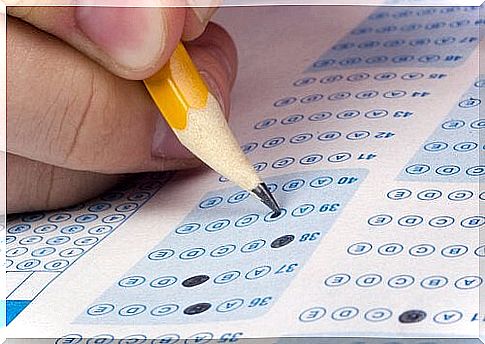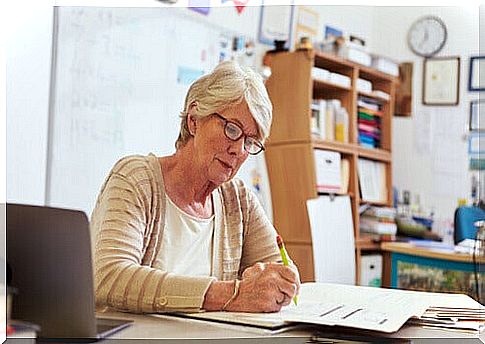School Assessment: Do Traditional Tests Assess The Student Correctly?

Currently, the most used school assessment method is the dreaded tests. We talk about tests where students must answer a series of questions about the subject being assessed. But are these tests the best way to assess students’ knowledge? Are there other alternatives?
Before talking about the validity of exams and alternatives, it is important to know what school assessment is and what its purpose is. If we ask anyone what a student’s assessment is, they will probably respond indirectly, saying that it serves to verify that the person being assessed has the necessary knowledge.
Thus, if they have the necessary knowledge, the student would pass and otherwise repeat the year. However, in reality, this last law is far from being fulfilled and, therefore, also the objective pursued by the tests that normally take place in our educational system.

A good assessment, within the educational framework, focuses on identifying the student’s current knowledge and skills to find out what level of learning he/she is at. And what is the purpose of this? A very simple purpose that teachers often forget: to assess whether the proposed didactic system is working for this student.
The grade, in addition to being a “quantification” of the student’s knowledge on the scale proposed by the teacher, should give us an idea of whether the strategy we are using for students to assimilate the knowledge we are trying to convey is working.
In this sense, if done well, the assessment would be a powerful tool at the service of the students’ learning process. However, seeing assessment only as a method of selecting or classifying students is a very precarious and reduced view.
What are the problems of traditional school assessment?
Understanding the assessment as a tool to guide students and adjust the way we teach them, we will see that traditional exams have many problems to help us with these two tasks. Here are some of its shortcomings:
- Only the student is evaluated. The only thing that must be evaluated is the student, the teacher is not evaluated or the educational environment is suitable for the development of students. In fact, there are many teachers who rate all students positively or don’t approve of anyone.
- Only one teacher evaluates. The student submits to the subjective judgment of the criteria of a single teacher. There are no evaluators other than the teacher who teaches the subject.
- Only results are important. Traditional exams may say something about the student’s current knowledge but nothing about the process. It doesn’t matter if he really understood the matter or simply memorized them the day before. That way, the result can be the same.
- Only knowledge is evaluated. It does not take into account the situation the student is in or what their strengths or weaknesses are. We cannot guide student learning without knowing what their abilities are.
- The student is assessed quantitatively. Traditional exams boil down to a grade, which must show or be adjusted to the proportion of the subject given or skills that the student has been able to assimilate.
- They encourage competition rather than cooperation. Ranking students with the best or worst grades helps create a competitive environment. Furthermore, in this competition indirectly proposed by the system, the most common thing is that, in the end, the student concentrates on getting a good grade rather than on learning the knowledge that is being assessed.

Alternatives to traditional exams
Taking into account the problems that traditional school assessment can bring, it will be necessary to look for alternatives. We could say that there are three pillars on which the assessment must be based to be correct: (a) Assessment by competences, (b) Portfolio systems and (c) Use of ICT’s.
School assessment by competences
The objective of a subject is for the student to learn a series of knowledge, but also and above all, to learn a series of skills. For example, the aim of mathematics is for the student to become familiar with and memorize some formulas and processes, but the most important thing is that he understands them and knows how to apply them to solve problems.
The assessment should identify the students’ strengths and weaknesses. Knowing this, we can guide learning to strengthen your skills and encourage the development of those you don’t already have. For this to work, it is essential to plan very well what skills we need to develop in a given discipline and an instructional system that is as flexible and individualized as possible.
portfolio systems
Competency assessment tells us what to assess, but we also need to know how. Portfolio systems provide us with an individualized assessment method focused on student development. But what is a portfolio system?
Psychologist Kingore defines them as: “A portfolio is a systematic collection of student work that is selected between teacher and student to provide information about the child’s development, learning profile, interests, level of achievement, and the development of learning over time”.
In other words, portfolios are “folders” where the student places all the work related to the subject studied and is continuously reviewed by the teacher to assess its evolution. This allows teachers to know each student’s level of learning and prepare appropriate instructions for him. Of course, it would also be helpful to assess whether the student has developed the necessary skills.
The problem with these portfolios is the complexity of their management due to the amount of information they contain. A possible solution to this difficulty would be ICT’s.

Use of ICT’s (Information and Communication Technologies)
Computers, the internet and other communication systems (ICT’s) offer us many resources that can benefit the assessment. ICT’s can help us solve the difficult portfolio management. In this sense, the existence of an online program that manages all the information provided by students and teachers for the different electronic portfolios would greatly facilitate the assessment.
To conclude, we leave a question for reflection: knowing the shortcomings of traditional tests and the alternatives that exist, why do tests still remain the standard assessment system?









